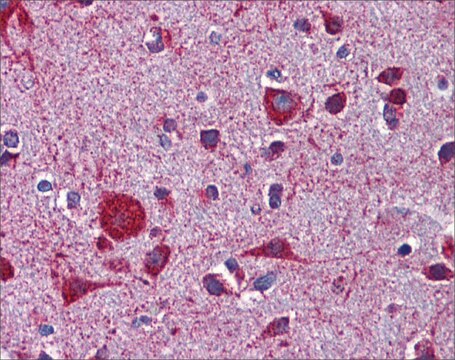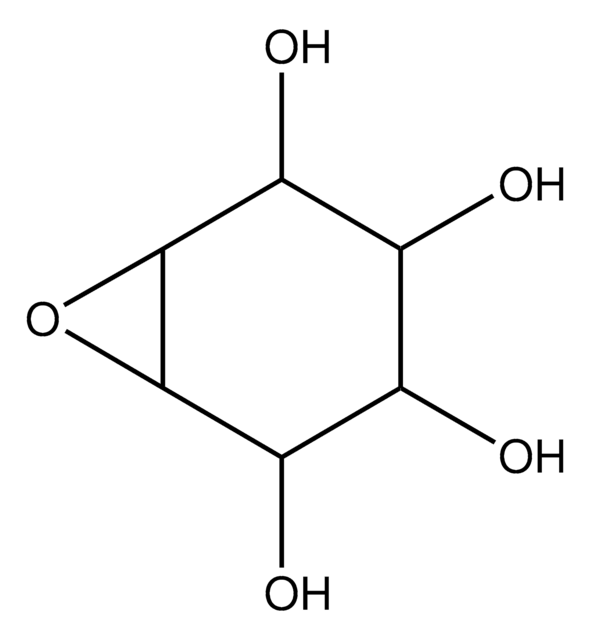MABN1872
Anti-ApoER2 Antibody, clone 4H3E6
clone 4H3E6, from rat
Sinonimo/i:
Low-density lipoprotein receptor-related protein 8, ApoER2, Apolipoprotein E receptor 2, LRP-8
About This Item
Prodotti consigliati
Origine biologica
rat
Livello qualitativo
Forma dell’anticorpo
purified immunoglobulin
Tipo di anticorpo
primary antibodies
Clone
4H3E6, monoclonal
Reattività contro le specie
mouse
tecniche
immunofluorescence: suitable
western blot: suitable
Isotipo
IgG2aκ
N° accesso UniProt
Condizioni di spedizione
ambient
modifica post-traduzionali bersaglio
unmodified
Informazioni sul gene
mouse ... Lrp8(16975)
Descrizione generale
Specificità
Immunogeno
Applicazioni
Immunofluorescence Analysis: A representative lot detected developmental stage-dependent ApoER2 expression patterns among 4% paraformaldehyde-fixed, OCT-embedded frozen embryonic (E13.0 to E18.5) and neonatal (P0) brain tissues from wild-type, but not Apoer2-knockout mice (Hirota, Y., et al. (2015). J. Comp. Neurol. 523(3):463-478).
Western Blotting Analysis: A representative lot detected HA-tagged full-length mouse ApoER2 exogenously expressed in HEK293T cells (Hirota, Y., et al. (2015). J. Comp. Neurol. 523(3):463-478).
Neuroscience
Qualità
Western Blotting Analysis: 0.5 µg/mL of this antibody detected ApoER2 in 10 µg of embryonic E16 mouse brain tissue lysate.
Descrizione del bersaglio
Stato fisico
Stoccaggio e stabilità
Altre note
Esclusione di responsabilità
Non trovi il prodotto giusto?
Prova il nostro Motore di ricerca dei prodotti.
Codice della classe di stoccaggio
12 - Non Combustible Liquids
Classe di pericolosità dell'acqua (WGK)
WGK 1
Punto d’infiammabilità (°F)
Not applicable
Punto d’infiammabilità (°C)
Not applicable
Certificati d'analisi (COA)
Cerca il Certificati d'analisi (COA) digitando il numero di lotto/batch corrispondente. I numeri di lotto o di batch sono stampati sull'etichetta dei prodotti dopo la parola ‘Lotto’ o ‘Batch’.
Possiedi già questo prodotto?
I documenti relativi ai prodotti acquistati recentemente sono disponibili nell’Archivio dei documenti.
Il team dei nostri ricercatori vanta grande esperienza in tutte le aree della ricerca quali Life Science, scienza dei materiali, sintesi chimica, cromatografia, discipline analitiche, ecc..
Contatta l'Assistenza Tecnica.








